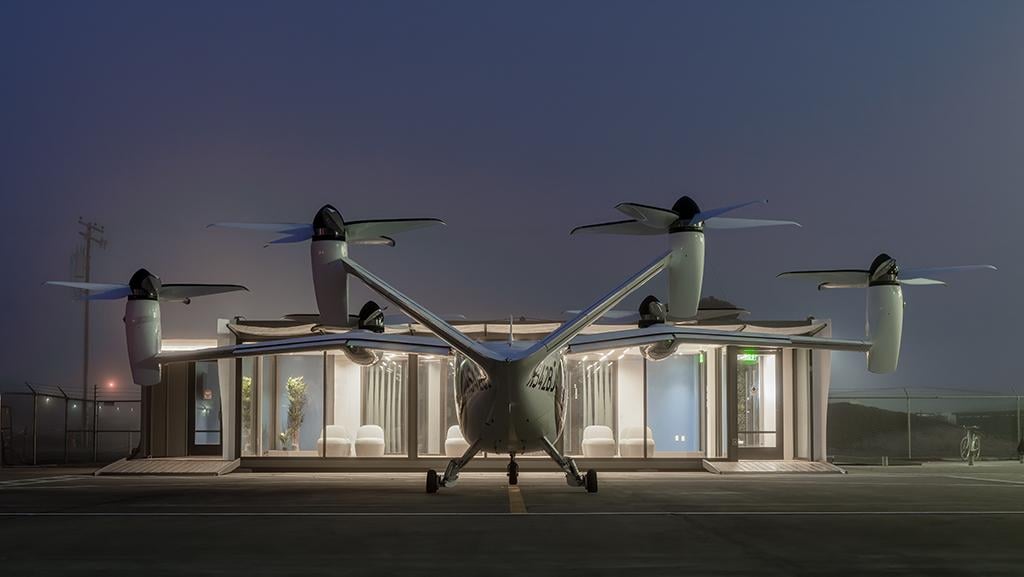Opinion: OEMs Will Play Critical Role In Establishing AAM’s Aftermarket

The market for advanced air mobility continues to grow in relevance and value, with manufacturers that are planning to build electric vertical-takeoff-and-landing aircraft raising $10.3 billion in 2021. Despite this, the potential impact on the MRO and aftermarket sectors has received little attention.
While aircraft certification challenges loom large, the aftermarket must not be an afterthought for OEMs. They are critical to the aftermarket support of their products, particularly in the early stages of entry into service and given that next-generation aircraft technology is a key to unlocking the potential of advanced air mobility (AAM) vehicles.
While electric vertical-takeoff-and-landing (eVTOL) vehicle OEMs have not yet published guidance for their vehicles’ continuing airworthiness and maintenance programs, eVTOLs are projected to be more convenient, affordable and simpler to maintain than conventional commercial aircraft. In fact, based on estimates by some OEMs and operators, eVTOL maintenance costs, as a percentage of operating costs, could be up to 50% less than those for helicopters.
This is due to OEMs introducing technology advancements and investments in vehicle design-enabled products such as new propulsion systems, more durable airframes and alternative energy sources.
Advanced analytics also will play a role in simplifying maintenance and repair operations. Predictive maintenance combines data with sensor technology, machine learning and artificial intelligence to provide insights useful to understanding vehicle health, planning for maintenance needs and limiting unscheduled maintenance.
Another differentiator between MRO for eVTOL and traditional commercial aircraft concerns the extent of maintenance required. MRO for eVTOLs is anticipated to consist primarily of light-to-intermediate maintenance, with no labor-intensive, costly overhauls of subsystems.
As with any product introduction, OEMs will play a crucial role, especially in the early phases of entry into service. OEMs, at this point in the product life cycle, will be the only stakeholders with deep technical knowledge of how the systems work.
AAM OEMs would be wise to leverage the experience and lessons learned from commercial aircraft manufacturers when launching new products. For example, when Airbus began A380 service with Singapore Airlines, it had technical staff, spares, tooling and a robust communications protocol in place to ensure technical issues could be resolved in flight to support uninterrupted operation. This has been the playbook for subsequent product launches.
Beyond the entry-into-service phase, OEMs likely will dominate and control the aftermarket, too. In addition to fundamental barriers to entry, like the limited scale and volume required for new independent MRO market entrants, OEMs’ hesitation to share the intellectual property for new AAM technologies required to maintain their equipment will be an impediment for independent suppliers.
Alton Aviation Consultancy expects that many MRO players likely will not have the opportunity to gain traction with AAM in the near term. As such, partnering with AAM OEMs probably will provide an essential path to developing those opportunities.
That said, once scale is achieved, the licensed service center model that is more prevalent in the business aviation segment might offer a potential framework for collaboration. While the aircraft OEM retains significant control of the intellectual property and contracts in the aftermarket, the maintenance of AAM aircraft could be performed by OEM-approved licensed service centers.
Although operators and other stakeholders such as Part 145 MRO service providers most likely will play a limited role in MRO for AAM aircraft, there may be greater opportunity in the spare-parts market. OEMs probably will require external specialists to support their increasing need for inventory management and supply chain solutions that will support the aftermarket.
Not only are spares crucial to ensuring airworthiness and operational reliability, but they also will be critical to growing vehicle sales. Given more direct parts replacements and the vehicles’ anticipated need for frequent battery-servicing and changes, there likely will be a demand for highly efficient parts distribution and logistics companies to facilitate supply-chain services to ensure eVTOLs’ reliability.
The AAM sector probably will adopt a light-touch maintenance philosophy compared with that for traditional commercial aircraft, due to AAM vehicles’ advanced technologies. However, maintenance and the MRO supply chain will remain key cornerstones in ensuring a successful AAM program. And with customers’ high expectations for vehicle availability and reliability, OEMs must proactively design, develop and promote efficient aftermarket support.
Joshua Ng is a director at Alton Aviation Consultancy, where he advises clients across the aviation value chain, from airlines to MROs to industry investors.




